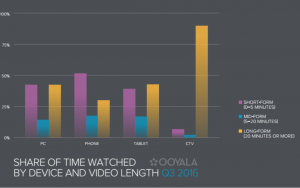It was Confucius who said, “If you shoot for the stars and hit the moon, it’s OK. But you’ve got to shoot for something.”
Although the Chinese philosopher wasn’t referring to organic Google results in 500 BC’s China, today’s online businesses would argue that “shooting for the stars” is the equivalent of aiming to land at the top of the search engine results page (SERP).
Google, much like the universe itself, is endlessly expanding and constantly changing. According to Moz, “Each year, Google changes its search algorithm around 500–600 times.” There are many elements that need to come together to shoot for the constantly evolving Google stars: social shares, inbound links, optimized content, and much more.
The solution is simplicity
The Google algorithms are complex and clandestine; when they change, entire industries get disrupted. The best SEO practices, however, are not complex. The great Confucius also said, “Life is really simple, but we insist on making it complicated”, so you should aim to un-complicate. Try to declutter. Simplify your SEO practices.
In essence, you can achieve this by creating quality: quality sites, quality content, quality design, and quality information.
And what is “quality” if not providing users with the most relevant results for their searches?
We have helped countless companies optimize their user experience and create quality websites. We have tracked millions of users and understand the intricacies of their online behavior. Our Session Playbacks, Heatmaps, and other digital customer analytics help businesses turn web traffic into web sales. But to increase the amount of relevant traffic that lands on a site, we always suggest simple on-site SEO practices, like the ones we explain, below.
The fundamentals of simple on-site SEO
SEO is typically broken down into two main segments: on-site optimization and off-site links, shares, and placements. The two are interdependent, and each can be simplified and focused for better results. The Chinese philosophers teach that “a journey of a thousand miles begins with a single step,” so the first step is tackling the simplification of on-site SEO.
Keyword Stars
Any search engine optimization initiative must begin with a plan. When it comes to SEO, that plan is based on keywords. The first fundamental step of getting to the top of Google with simplified SEO is determining which keywords are right for your site. To do this:
- Check the keywords that are already bringing traffic and conversions to your site. Pick the top 5-10
- Check the same for your top competitors. Add any keywords that you have not optimized for in the past.
- Create a list of approximately 10 long tail keywords that are relevant to your business and less competitive than the main keywords.
- Ask customers to describe your product and its benefits in 3-5 words. This will generate more long tail keywords.
With these four steps, you have identified your stars. These keywords are the ones you will shoot for: optimize on-site and off-site, create quality content, and watch as you rise to the top of the SERPs.
On-site Arrows
How would Confucius go about shooting for the stars? In the time of the Zhou Dynasty, archery was one of the Six Noble Arts; in fact, Confucius himself was an archery teacher. He would likely choose a bow and arrow to shoot for the stars. And so we have our on-site arrows, powerful weapons for conquering our goal of reaching the top of Google SERPs:
- Relevance
By far the most important pointer is to create a page with interesting and relevant information about your keyword. Include text, images, or videos: anything that is important and helpful.
- Title Tag
Give each page on the site a unique title tag, under 64 characters, using a keyword phrase at the beginning. For example, if your page is about Chinese archery, a title might be “Ancient Chinese Archery: a history of warfare in East Asia”
- Meta Description
Within 160 characters, use 1-2 keyword phrases to describe the content on the page. For example, “Ancient Chinese archery was vital to Asian culture and philosophy. Techniques were taught by masters like Confucius using bows of various designs.”
- H1 Tag
Each page should have only one H1 tag. It should appeal to the target visitor and include a keyword. Perhaps something along the lines of “10 Facts You Need to Know about Ancient Chinese Archery” would be enticing.
- Keyword Repetition
Use the keyword phrase once near the beginning of the page’s content and then once again wherever it makes sense. Never force a keyword, and do not use it more than 4-5 times on a page.
- Images
When displaying images, use the keyword in the file name as well as the Alt tag.
Understanding SEO
Some companies erroneously assume that they need to learn everything that is available about Google algorithms and their updates before they can begin to optimize their websites. To them, Confucius would say, “I hear and I forget. I see and I remember. I do and I understand.” Get started with these simple SEO steps to create quality, and shoot for the Google stars. Then, watch your site rise in the SERP rankings.
This post was originally published on the Clicktale Blog.
Digital & Social Articles on Business 2 Community(45)
Report Post







